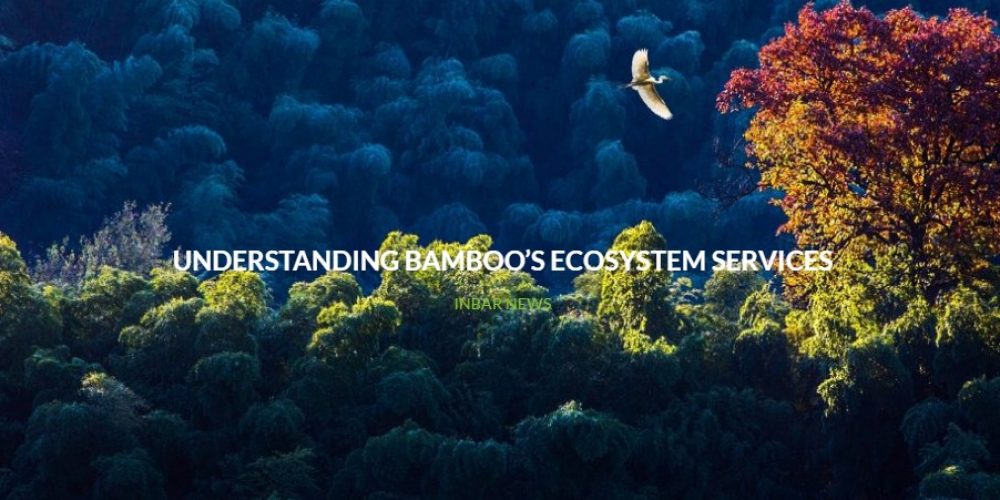Bamboo forests have been intimately associated with human wellbeing for thousands of years. With a global spread of more than 30 million hectares, this fast-growing plant provides a number of critical goods and services for rural populations. As well as supplying food, forage, timber, construction and bioenergy in rural farming systems, and acting as a crucial part of subsistence livelihoods, bamboo forests also furnish a wide range of environmental services: as a source of carbon storage, a means to stabilise slopes and prevent soil erosion, and a crucial part of biological diversity.
Despite their many uses, there has been little focus on the assessment of ecosystem services from bamboo forests. As a grass plant and not a tree, bamboo ‘falls through the cracks’ in many existing ecosystem service analyses, and so bamboo forests’ huge role is often underplayed. Statistics given are often poor, inconsistent, or based on different definitions and methods across countries.

New research, published in November 2019 by the International Bamboo and Rattan Organisation (INBAR) and CIFOR, provides a much-needed framework for assessing bamboo’s ecosystem services. The three-part framework allows people to assess what ecosystem services exist based on specific types of bamboo forest management practice. Importantly, the framework can be easily applied, particularly in data-poor regions, and can be tailored to fit different contexts.
The authors find that bamboo forests “can provide key ecosystem services with local and global benefits.” The study shows:
In fact, because of their fast growth and higher culm density, bamboo forests supply more biomass than both natural and planted forests: a plantation of giant bamboo (dendrocalamus giganteus) with 200 bamboo clumps per hectare can give an annual yield of about 2000 poles, with a biomass of as much as 50 tonnes. Similarly, bamboo forests have a higher production capacity for food, forage, timber, bioenergy and construction materials, as well as regulating services such as landscaper restoration, landslide control, groundwater recharge and water purification. Of course, much depends on the type of bamboo forest: naturally occurring bamboo forests, for example, are much more effective at regulatory water services than bamboo plantations.
“Bamboo forests can provide key ecosystem services with local and global benefits”
This paper uses the new framework to assess bamboo ecosystem services in three countries in Africa and Asia: Ethiopia, Indonesia and Nepal. As these cases demonstrate, bamboo is already an important part of local life. In Nepal, bamboo has been planted to control floods from the Rui River and provide natural fencing to prevent wild animals entering the villages adjoining Chitwan National Park; in Ethiopia, bamboo is an important source of forage supply, while both Nepalese and Indonesian communities have important cultural connections with bamboo forests.
Due to their important benefits for humans and the environment, the authors state that bamboo “would be a better replacement
in plantation forestry” (excluding natural forests). Overall, the study confirms the role of the bamboo forest in providing key ecosystem services with local and global benefits. “Bamboo forests… in general offer higher amounts of ecosystem services than do degraded forest and planted forest. Only natural forest supplies some of the ecosystem services more than bamboo forests do.”
Although communities in Ethiopia, Indonesia and Nepal already use bamboo in a range of ways, the framework analysis shows how bamboo’s potential to provide significant ecosystem services remains “mostly unrealised.” These include soil and flood control, sediment retention, carbon storage, improved water regulation and fresh water provision.
“Bamboo is often the ‘forgotten solution’ in terms of environmental protection and climate change”
By providing a clear explanation and framework for assessing bamboo forests’ ecosystem services, this study contributes to INBAR’s ongoing Global Assessment of Bamboo and Rattan for green development (GABAR), which aims to map the scope and uses of bamboo for sustainable development.
According to Trinh Thanh Long, a co-author of the report and GABAR coordinator: “Bamboo is often the ‘forgotten solution’ in terms of environmental protection and climate change, but it can play a very important role. This framework makes it easier for people to assess the ecosystem services of their native bamboo forests and bamboo plantations, and confirms the role of the bamboo forest in providing key ecosystem with local and global benefits.”